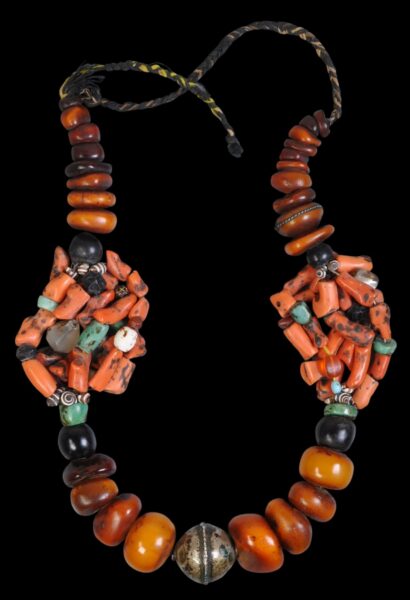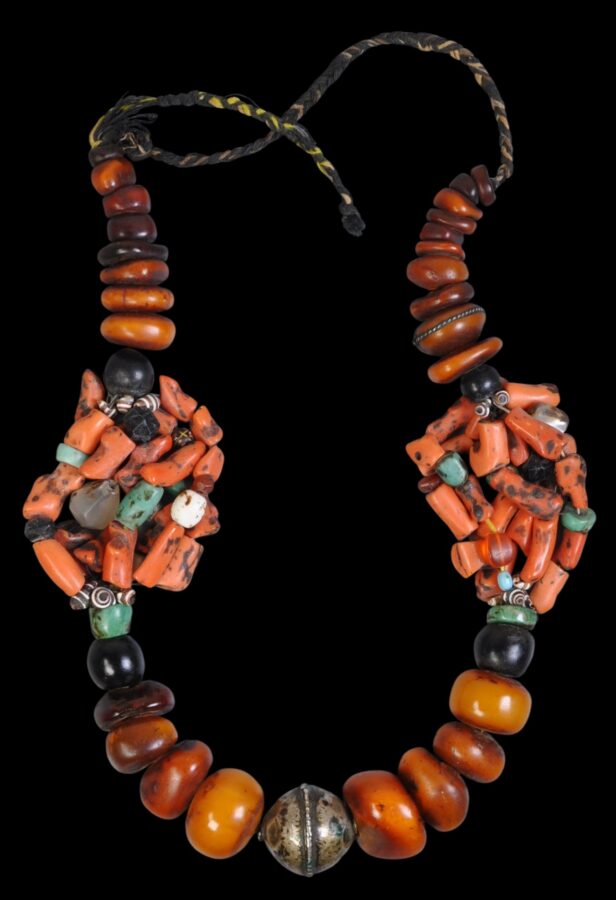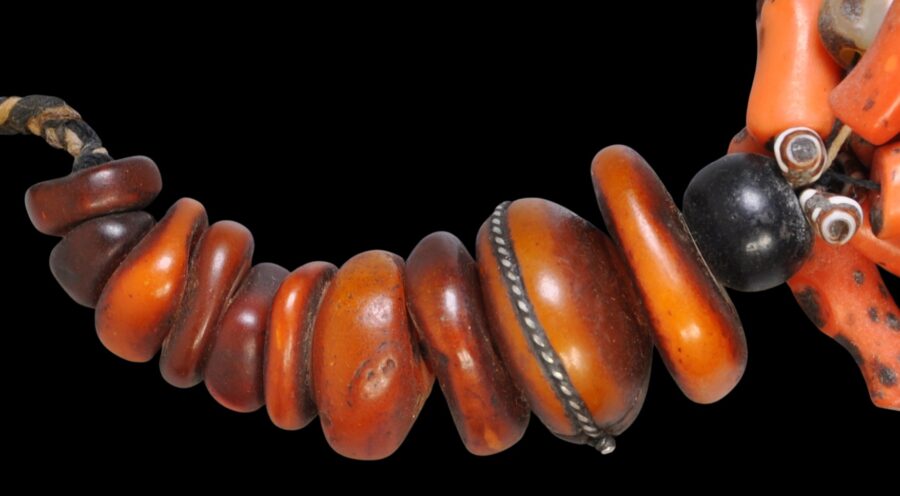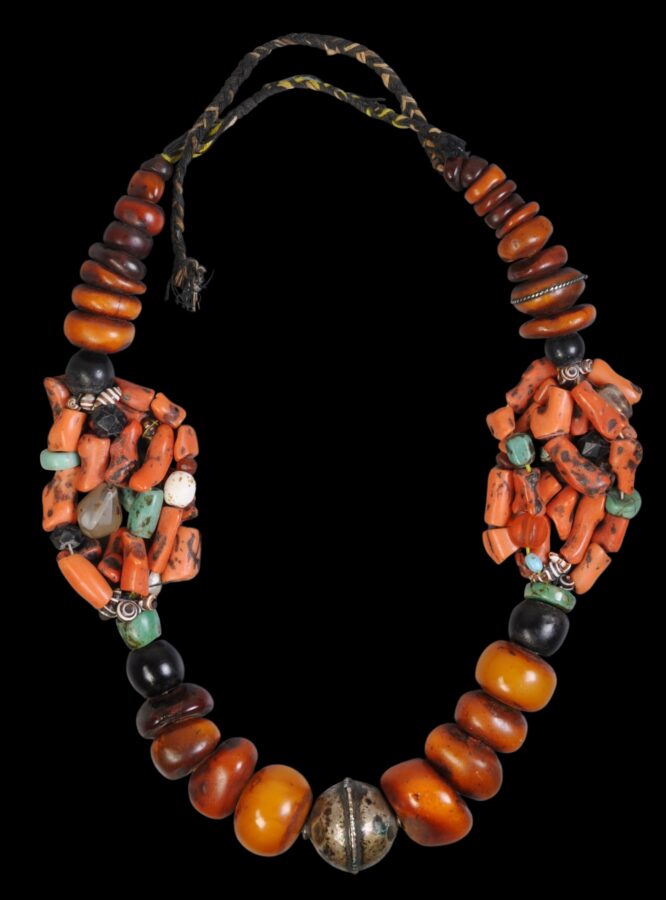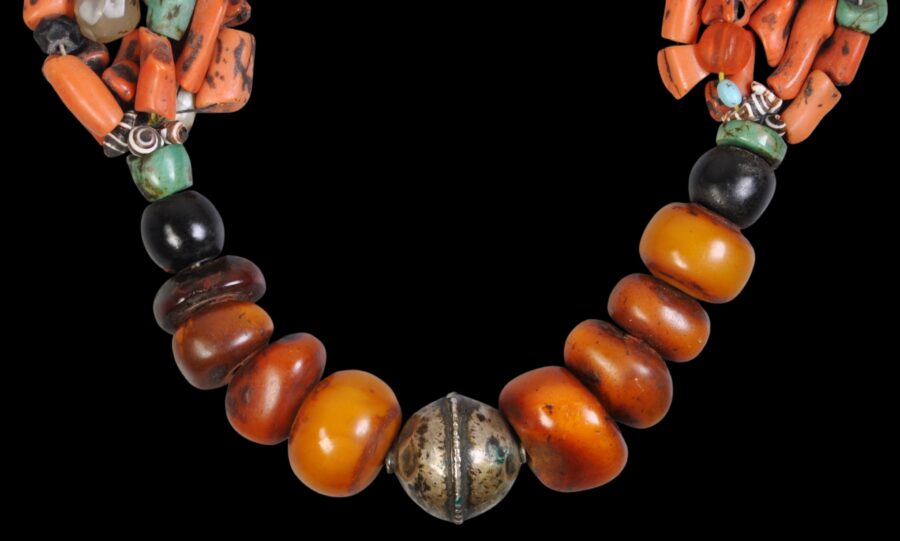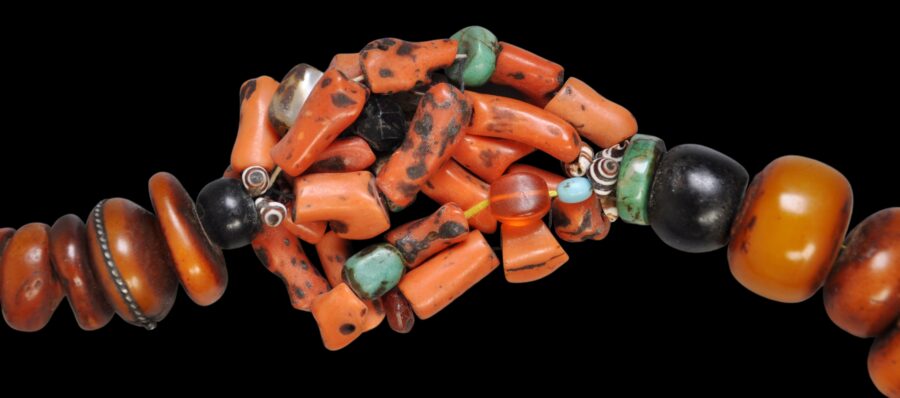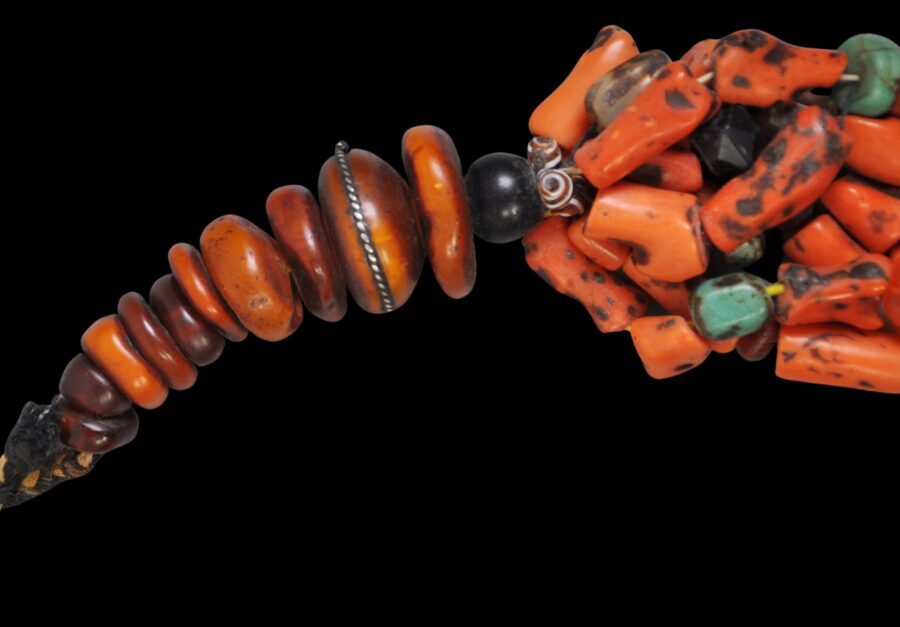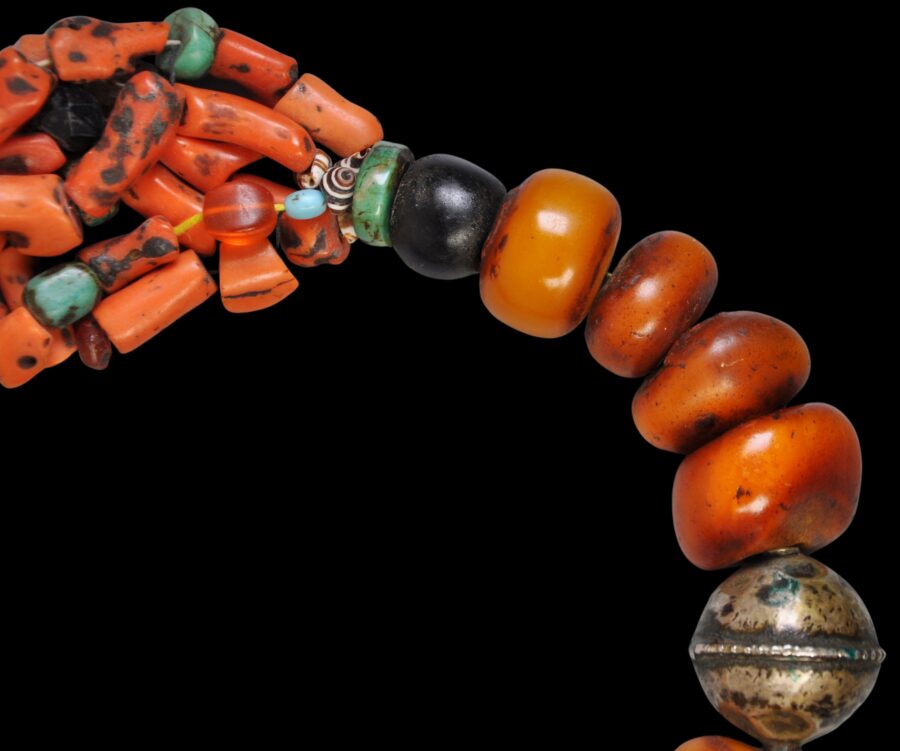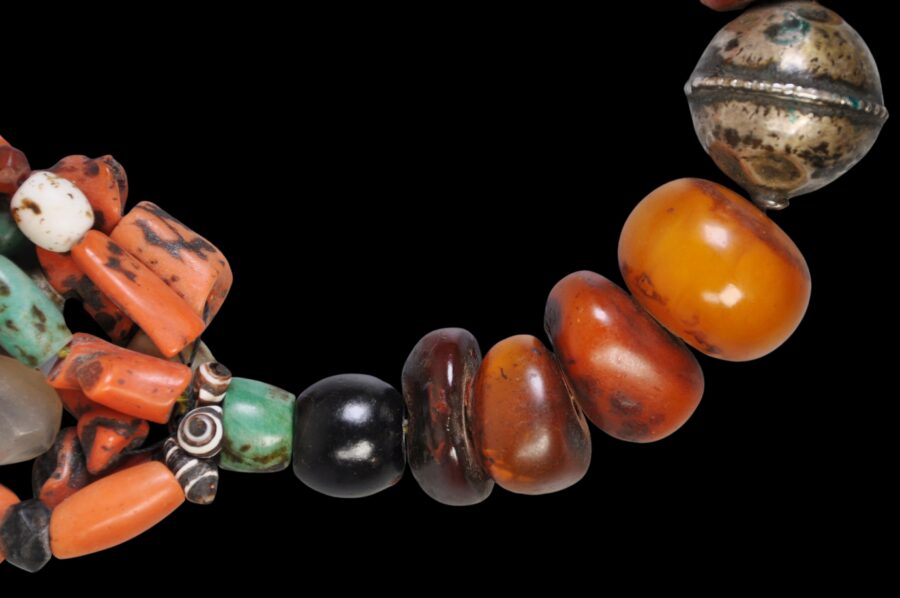Enquiry about object: 9688
Superb Moroccan Berber (Amazigh) Necklace
Amazigh or Berber People, Draa Valley, Southern Morocco latest stringing: mid-20th century from earlier elements
length: 99cm, width of amber: widest at 4cm, weight: 464g
Provenance
private collection, Germany; collected in the 1980s
This splendid necklace is from the Berber People of the Draa Valley in southern Morocco. It is in its original state, with its original threading and, unlike many extant available examples, has not been amended or added to in any way other than by the original owner. Probably it was last restrung locally around 1950. Commonly, when a necklace was restrung, elements were added to many (much) earlier elements by its traditional owner.
Such necklaces were among the most valuable items many Berber women would own. As their wealth increased, they might add elements to the necklace over their lifetime. Similarly, if they needed money they might remove several elements and sell them to raise money.
It comprises large amber beads; large segments of Mediterranean coral; amazonite; glass trade beads including a Venetian lampwork bead that dates to the 1930s and Bohemian glass beads; small striped sea snail shells; two old amber-coloured bakelite beads; a mother-of-pearl bead; and a large hollow spherical silver alloy bead most likely traded in via the Ziz Vallery from northern Morocco. Also there are four large black spherical beads known locally in Morocco as tak tak beads. These were highly prized and have become so sought after in Morocco that they are now sold on a per gram basis rather than by bead. They are likely to be Dutch and possibly French glass trade beads dating to the 17th century.
Included are sixteen amber beads that are old, authentic and unprocessed. One of the larger amber beads has a twisted silver wire around it to keep it intact. Old, native repairs such as have tended to make the amber even more desirable as its underscores its age, authenticity and value to the women who owned it.
Related examples are illustrated in Hoek (2004, p. 29) and Draguet (2020, p. 396) – although the latter illustrated example has been added to and no longer is in its original state unlike our example here.
Bakelite was invented in 1907 by a Belgian-born American chemist and soon was used to make amber-style beads (among many other applications). These beads were incorporated into necklaces and other jewellery by Berber women. The bakelite beads were not intended to be passed off as amber – they are of a relatively standard barrel shape, whereas natural, unprocessed amber beads are always of an irregular shape.
The necklace elements are flecked with remnants of scented paste which traditionally was applied to jewellery worn by women. It was applied not only for its scent but also for spiritual and aphrodisiac purposes. Pastes were ordered from specialist mixers and the recipes varied from retailer and also by purpose, but a typical recipe for such a scented paste might include rose petal powder, jatamansi (also known as spikenard or nard) powder, agarwood powder, mahlab powder, ground cloves, ground amber perfume block, gum Arabic powder, rosewater, ambergris tincture, geranium oil, rose essential oil, and neroli essential oil.
The necklace retains its original stringing which is traditional plaited cotton and wool stringing.
Overall, it is a rare and utterly authentic necklace of a type now difficult to come by. It contains many rare, valuable and large elements, and as mentioned, it is in its authentic state.
References
Draguet, M., Berber Memories: Women and Jewellery in Morocco, Mercatorfonds, 2020.
Hoek, C., et al, Ethnic Jewellery: From Africa, Asia and Pacific Islands, Pepin Press, 2004.


